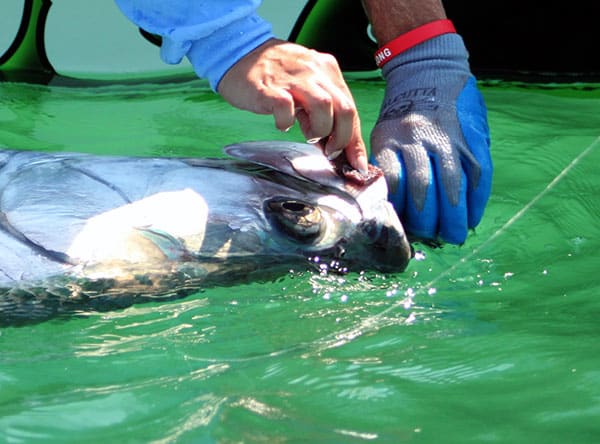
Tarpon FWC Tagging
Tarpon now have “fingerprints” in Florida, and not the kind that need ink pads. Individual silver kings will have their DNA sampled to determine recapture rates, seasonal movement patterns, site fidelity and survival.
In 2005, the Florida Fish and Wildlife Research Institute (FWRI) started with a pilot study to see if DNA could be used as a biological tag to identify fish, thus creating the Tarpon Genetic Recapture Study was born
“It worked,” says Dr. Kathryn Guindon, an assistant research scientist at the Florida Fish and Wildlife Commission. “A year later, we went statewide with sampling provided by volunteer anglers.”
Guindon and the FWRI hope to use the returned DNA samples from anglers to address their objectives, and then turned into published results.
“With these samples, we will be able to estimate recapture rates of tarpon,” she says. “In other words, how often anglers catch the same tarpon.”
After recaptured tarpon data is determined, they will learn about the seasonal movement patterns, specifically spawning season from April to August and non-spawning season from September to March, along Florida’s coasts and through inshore waters.
“Those recaptures from year to year teach us about site fidelity,” she says. “We are defining if the same tarpon are coming back and recaptured in the same area or region within the spawning season, outside the spawning season or from one season to the next.”
The crux of finding out these objectives relies on matching new and old samples from anglers’ samples, done through tagging. The tagging method does not involve the injecting of an actual tag inside the muscle of the tarpon
“We use DNA as the ‘tag’ for evaluation of our study,” she says. “DNA is a tag that will last as long as the fish is alive and swimming. DNA does not rely on technology.”
This is the final year of sampling for the study. As of October 31, 2013, approximately 396 tarpon anglers and organizations submitted 3,949 of the total 21,784 samples inventoried in the database.
For those who want to volunteer, anglers can request a kit by (800-367-4461) to call toll free and request a kit or an email can be sent to TarponGenetics@MyFWC.com.









